Gardeners tend to forget about pruning their plants. Either they do not know how to do it and its benefits. They might also be concerned about endangering their plants if done wrong. Every garden can reach its peak if the plants are properly pruned.
Below is Team Ideas24’s guide on how to prune like a professional gardener.
Contents
Basics of Pruning
What is Pruning?
Pruning isn’t just about cutting off branches that stick out. It’s a gardening skill that helps your plants grow better and look nicer. Think of it like giving your plants a good haircut. Just like you wouldn’t want a bad haircut, your plants also need careful trimming. When plants grow too much without control, they can get messy. It’s like having too many things in a room. Stuff gets lost, and it’s hard to move around.
Pruning is a useful skill you can pull off. Whether growing your garden as a hobby or cutting down grocery bills by growing your food, pruning your plants can pay you back in dividends.
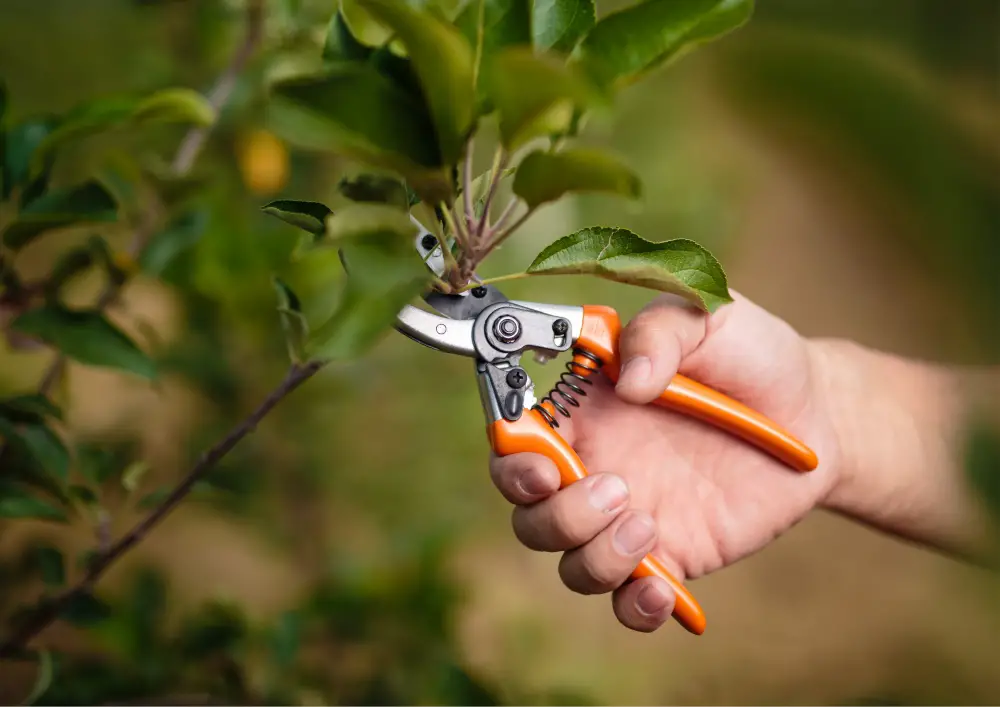
Types of Pruning Tools
The first step in pruning is picking the right tool. Each tool has a specific job, so let’s get to know them better.
Hand Pruners
Hand pruners are small and easy to use. They’re great for snipping off small branches and leaves. These are perfect for herbs, flowers, and thin branches. They fit in one hand, and you just squeeze to cut.
A good example is one which has a rubber grip and ground steel blade. This shear makes it easy to do precision cuts that reduce the risk of harming your plants.
Loppers
Loppers are like big pruners. They have long handles and can cut thicker branches up to two inches in diameter. Loppers are your best friend if you have big bushes or small trees. The long handles give you more power, making it easier to cut.
Power Saws
Sometimes, branches are just too thick for hand tools. That’s when you need a power saw. These motorized saws can cut through very thick branches and even tree trunks. They make the job faster but be careful. Always follow safety rules when using power saws.
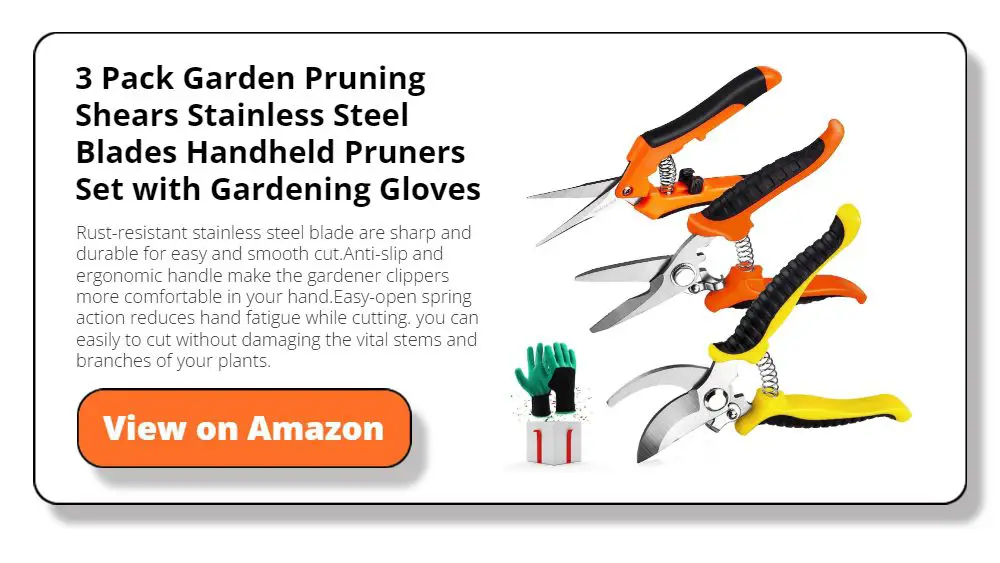
When to Prune
Knowing when to prune is just as important as knowing how. Timing can make a big difference.
Seasons
Spring and late winter are usually the best times to prune. Plants are waking up from winter and starting to grow. But be careful. Some plants prefer to be pruned in the fall. Always check what’s best for your specific plant.
Plant Growth Period
Young plants and trees need different care from older ones. When a plant is young, you want to help it grow. A little light pruning can guide it. Once plants get older, you’ll be pruning to keep them healthy. You’ll cut away dead or sick parts and help the plant keep its shape.
Benefits of Pruning
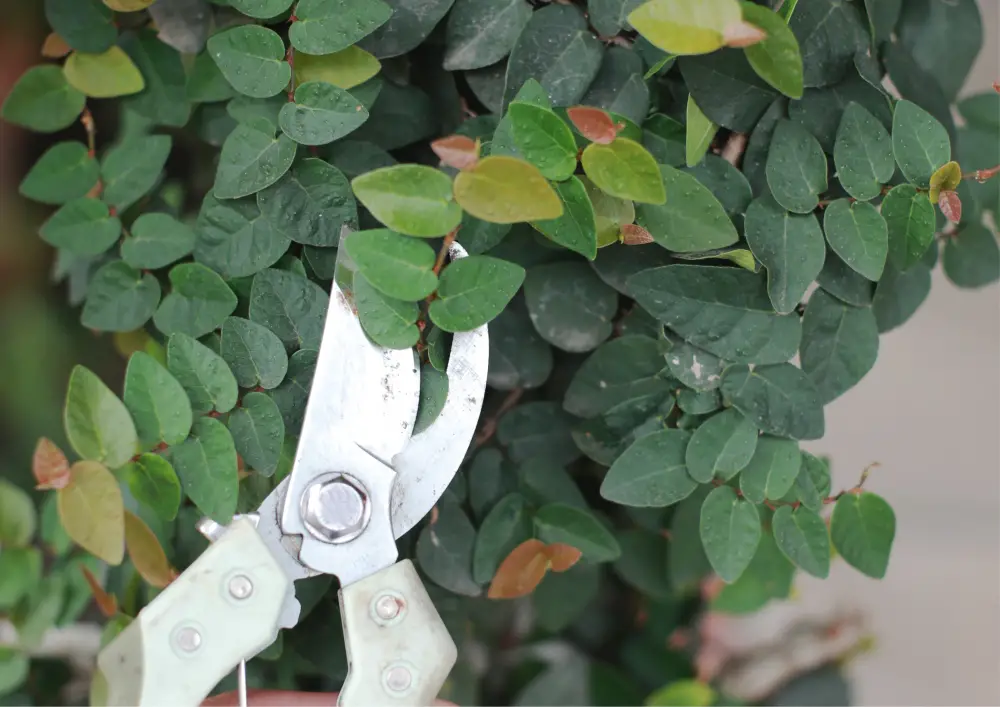
Cutting away extra branches does more than tidy up your plants. It’s an all-in-one method to up your gardening game. Whether you garden just for fun or for some extra cash, good pruning is your ticket to better results. Now, let’s talk about why this is so important.
Improves Plant Health
Pruning is one of the best ways to keep your plants healthy. When you remove dead or damaged branches, you’re eliminating a breeding ground for insects and disease.
Removes Unhealthy Parts
Dead or sick branches are like a drain on a plant’s energy. By removing these, the plant can focus on growth and fruit production. Think of it like optimizing a business; you want to invest where you get the best returns.
Aids in Disease Prevention
A diseased branch can infect the entire plant. Cutting it away prevents the spread of disease. It’s similar to isolating a problem in a project before it affects the whole operation.
Encourages Growth
Pruning is more than a plant’s safety net; it’s its launch pad. You’re setting the stage for your plants to thrive by making the right cuts.
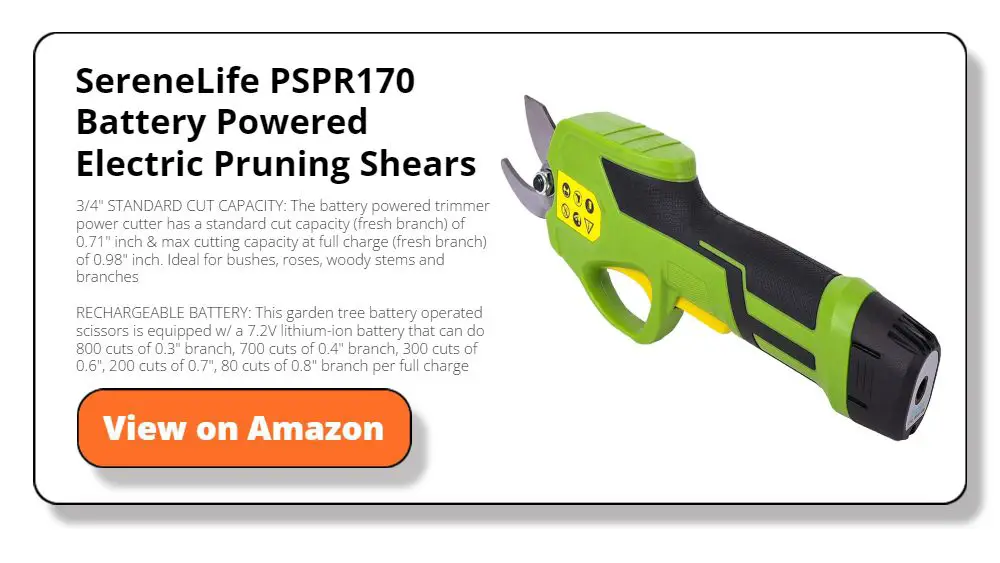
Spurs Fresh Growth
Cutting back older branches makes room for new ones. It’s like clearing the weeds so the good stuff has room to grow. Your plants get sturdier, not unlike having a balanced investment strategy.
Amps Up Flower and Fruit Numbers
If your plants are the flowering or fruit-bearing kinds, listen up. Regular pruning makes your plant zero in on producing more good stuff. It’s as if you’re steering your efforts where you get the biggest bang for your buck.
Shapes the Plant
Pruning is both a craft and a tool for better gardening. It gives you the reins on how your plants grow and look. With the proper cuts, your plants can turn into pieces of natural art gracing your home garden.
Boosts Curb Appeal
When you prune with care, your plants look better. Period. Whether you’re aiming to dazzle at a farmer’s market or just want a killer backyard, good looks matter.
Pruning Techniques
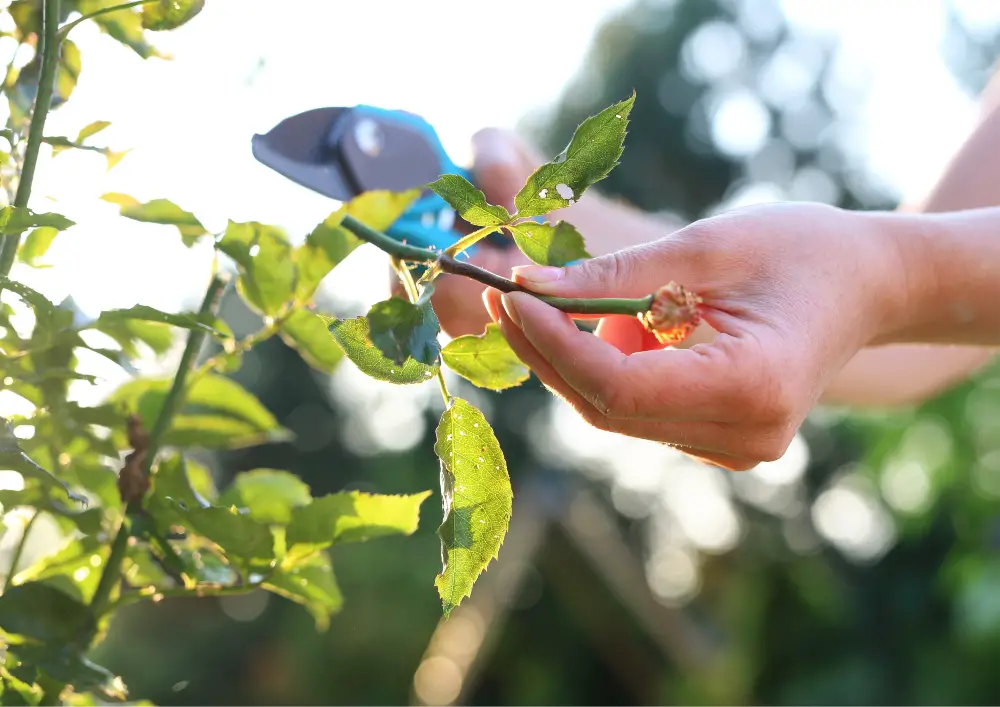
There’s more than one way to prune a plant, and your chosen method can make a difference.
Basic Cuts
When you’re new to pruning, the types of cuts can feel a bit overwhelming. But mastering them is key. It’s like learning the basic chords in guitar; once you know them, you can play almost anything.
Heading Cuts
These cuts help shape your plants by reducing their size. It’s not just snipping any part, though. The cut should be just above a leaf or a bud. Doing it this way guides the plant where to grow next. It’s a little like giving directions to a lost driver; point them the right way, and they’re good to go.
Thinning Cuts
Thinning cuts are about decluttering. When branches grow too close, they fight for light and air. By removing some, you let the others breathe. It’s like deleting old files on your computer to make it smoother.
Tool Techniques
The right tool makes the job easier and healthier for your plants.
Proper Grip
A good grip is key for precise cuts. Too loose and you might slip; too tight and you tire your hand out. Think of it like holding a pen; you want enough grip to write smoothly without pressing too hard.

Clean Cuts
A clean cut is easier for the plant to heal, reducing the disease risk. It’s like how a clean wound is less likely to get infected. Make sure your blades are sharp, and your cuts are quick.
Specialized Techniques
After mastering the basics, it’s time for the next level. These are like the secret menu items only the regulars know about.
Pollarding
Consider pollarding if your trees shoot up like a teenager in a growth spurt. Cut back new branches to a set point each year. This keeps the tree compact. Imagine it’s like setting a height limit on a basketball team.
Espalier
Limited space? No problem. With espalier, you train trees to grow flat, almost two-dimensional, against a wall. It’s like organizing books on a shelf to maximize space. Plus, it adds a touch of elegance to any garden setting.
Common Pruning Mistakes

Pruning is a skill; it takes time to get it right, like any skill. But there are some pitfalls you’ll want to avoid from the get-go. Mistakes can cost you, not just in your garden’s appearance but in plant health too. Let’s break down some of the most common missteps.
Cutting Too Close or Too Far
Getting the length of your cuts just right is a key skill in pruning, but it’s often easier said than done. Cutting too close to the trunk or main stem can leave a plant with a gaping wound that struggles to heal. It’s a lot like taking too much off the top during a haircut; it’s not just the immediate look affected but the long-term growth.
On the other hand, leaving a branch stub that’s too long opens the door for pests and diseases. This excess wood acts like a breeding ground, unlike leaving food out and attracting bugs. Balancing the length of your cuts is essential. It’s as critical as measuring ingredients in a recipe; if you get it wrong, the whole dish could flop.
Precision is key, and this takes both practice and observation. Learning how much to cut comes with experience, so take your time and make each snip count.
Ignoring Angles
The angle at which you make your cuts is another overlooked yet crucial aspect of pruning. A flat cut may seem like the most straightforward way to remove a branch, but it comes with its downsides. Namely, flat cuts can collect water, leading to rot and disease, much like a flat roof can suffer from water pooling.
Slanted cuts are generally better because they guide water away from the cut surface. Think of this like the aerodynamics of a car; the shape matters for performance. However, an overly slanted cut can expose too much surface area, which could be better. The balance is in finding the right angle that promotes healing while minimizing exposure to elements like water and pests.
Using Dull Tools
The condition of your tools can make or break your pruning efforts. Dull blades can do more harm than good. They result in ragged, uneven cuts that struggle to heal and can lead to disease. Imagine chopping vegetables with a dull knife; it’s frustrating and ruins the produce.
Dull or unclean tools can also carry diseases from one plant to another. It’s the plant equivalent of not washing your hands during flu season; you’re just asking for trouble. Always keep your tools sharp and clean.
Maintaining your tools is like car maintenance; it’s not the most exciting but vital for long-term performance. A sharp blade gives you a clean cut, reducing damage and speeding up the healing process for your plants.
Overdoing It
Pruning can feel like a satisfying job. Each cut makes the plant look better, and it’s tempting to keep going. But beware, over-pruning is a common pitfall. Cutting back too much can send your plants into a state of shock. It’s a lot like going to the gym and overdoing your workout on the first day; you won’t be able to move well for a while.
Over-pruning can leave a plant weak and vulnerable. The plant may put all its energy into growing new branches, ignoring other aspects like flowering or fruiting. Imagine spending all your time cleaning the house but forgetting to pay the bills; it’s a matter of misplaced priorities.
Timing also matters when it comes to pruning. Each plant has its own best time for a trim. If you prune a spring-flowering plant in late winter, you might cut off the buds about to bloom. It’s akin to harvesting fruits before ripe; you miss the best part.
In short, balance and timing are crucial. Remember when to prune what and stick to the guidelines to avoid harming your plants.
Ignoring Plant Type
Different plants have different pruning needs, and a one-size-fits-all approach can backfire. For example, the pruning technique on a rose bush will not work well for an apple tree. It’s like using salt when the recipe calls for sugar; both are seasonings but yield different results.
It’s essential to know the particular needs of each plant type in your garden. Young trees may need their lower branches removed to encourage upward growth, while flowering shrubs may require more selective cuts to encourage blooming.
Age is another factor to consider. Younger plants are still growing and may respond differently to pruning than older, more established plants. Think of it like raising kids; what works for a toddler won’t necessarily work for a teenager.
In young plants, you may want to encourage branching and fullness, whereas in older plants, you may be focused on maintaining shape or boosting fruit and flower production. Tailoring your approach based on plant type and age will result in a healthier, more attractive garden.
Conclusion
Pruning is as essential to your plants as water and sunlight. Cutting off unneeded parts allows plants to grow healthier or make incredible crops. Practicing this skill and using proper cutting tools reduce the risk of harm to your plants.





